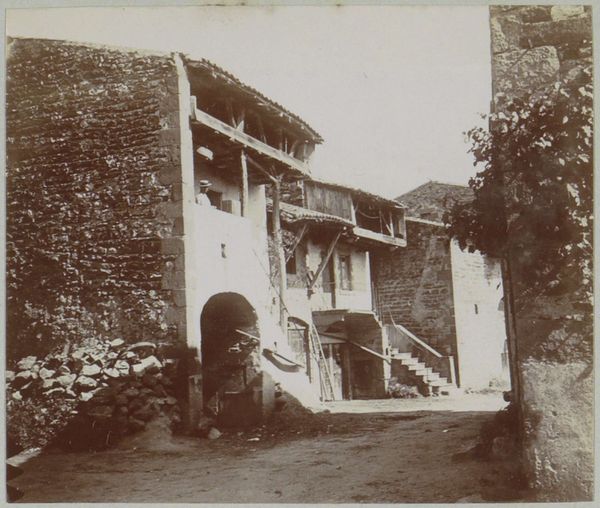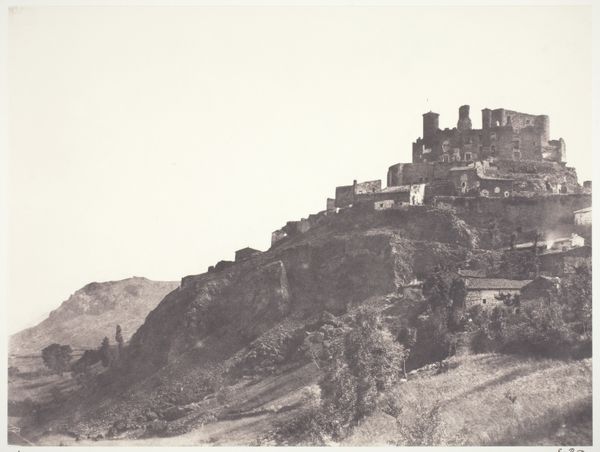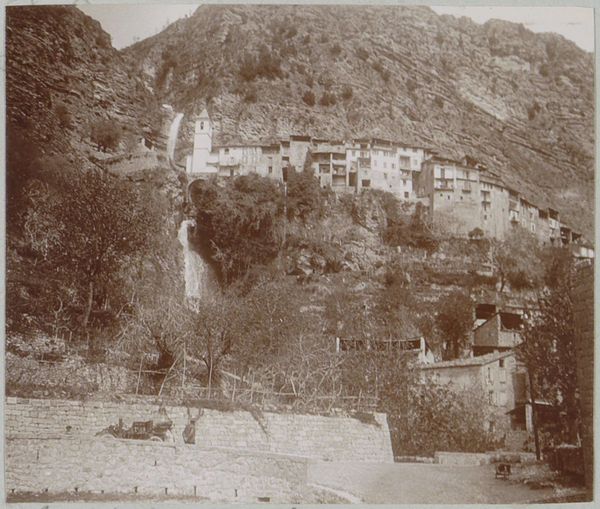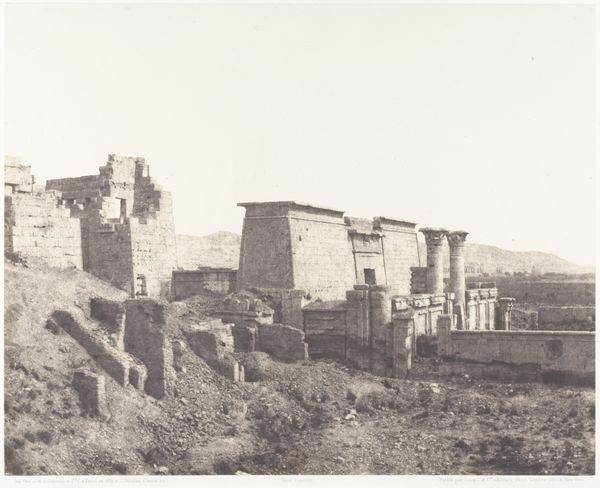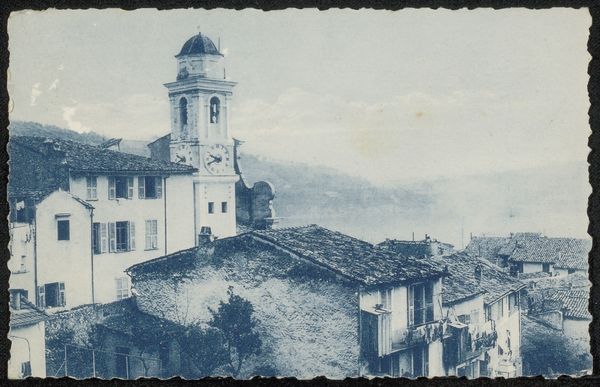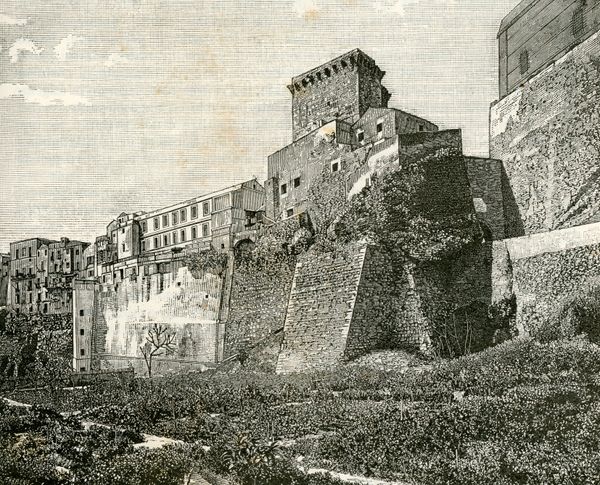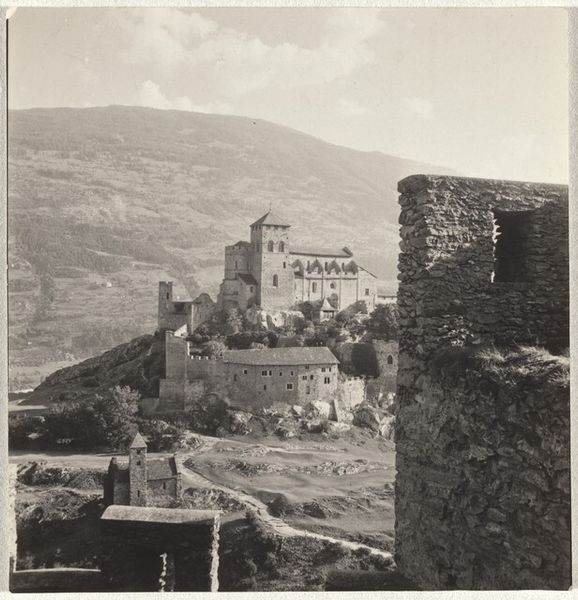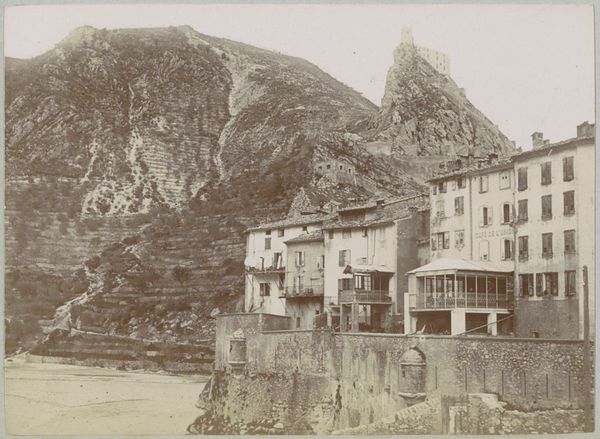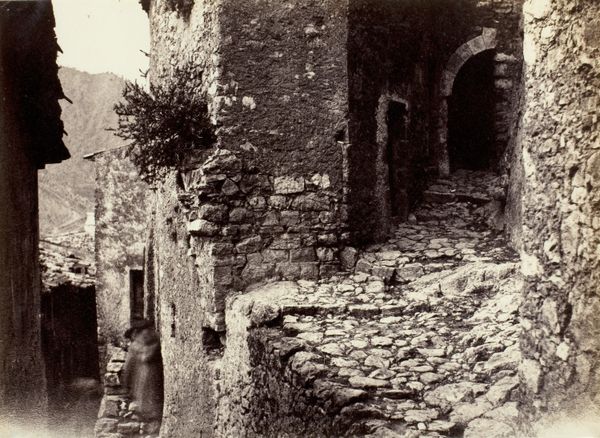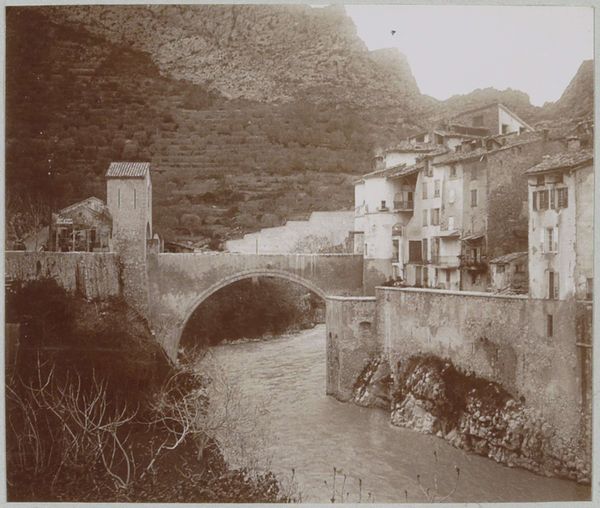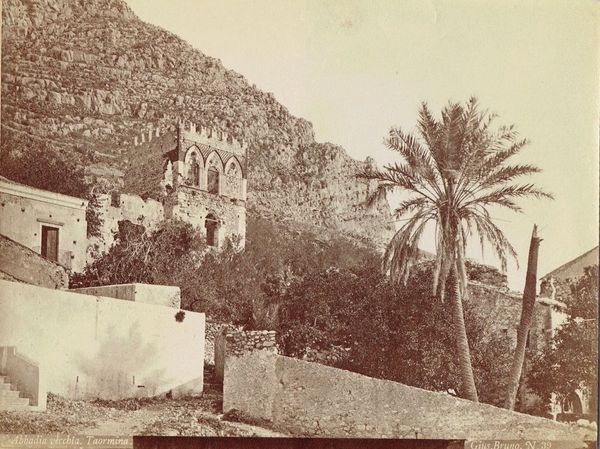
photography, architecture
#
landscape
#
charcoal drawing
#
photography
#
charcoal
#
architecture
Copyright: David Kakabadze,Fair Use
Editor: We're looking at David Kakabadzé's Untitled, made around 1928, likely a photograph, though it has the stark contrasts of a charcoal drawing. The towers rising above the clustered buildings give the image a feeling of resilience, like these structures have stood the test of time. What do you see in this piece, from your perspective? Curator: That's a powerful initial impression. What strikes me is the dialogue between the architecture and the landscape, and what that speaks to in terms of power. Consider the towers: are they defensive structures? Who are they defending, and from whom? This image makes me think about who is included and who is excluded. The photograph seems to document an enclosed space, safe yet impenetrable. Who controls the narrative here? Editor: I didn't think about it in terms of exclusion. I was focused on the structures themselves, their relationship to the environment. Is the high contrast suggestive of surveillance in some way, where the watchers cannot be watched? Curator: Exactly! And consider the date, 1928. This was a time of intense ideological conflict, a struggle for power and representation within art itself. We have to ask whose gaze is being centered. Is it the colonizer looking into the "exotic" or "primitive," or the native representing himself from his own perspective, from the inside out? Think about who had access to cameras, who had the power to distribute and archive these images. The layers of identity and influence here are complex. Editor: So, it's less about the buildings themselves and more about the social dynamics they represent, the hidden stories within the frame? I never would have looked at it that way. Thank you. Curator: It's always both. Seeing the architecture prompts questions about the people. Art opens a space for critical discussion and reflection; the buildings act like social structures made physical and visible, reflecting the complex intersections of that time. Editor: It's given me a whole new perspective. I appreciate that.
Comments
No comments
Be the first to comment and join the conversation on the ultimate creative platform.
